Ten useful apps for mobile reporting
Nowadays, most journalists carry mobile recording studios with them without even being aware of it. Almost every smartphone can be used for multimedia reporting – anything from short audio clip productions, taking pictures, recording video interviews, or even creating a blog with a combination of these elements.
Using a smartphone for mobile reporting has many advantages. The most obvious one is being able to capture and edit pictures, audios, and videos anytime because you’ve always got your phone with you. In addition, many smartphone apps and programmes now offer editing functions that are so good that the productions have studio quality.
When you’ve collected and edited your content, you can send or publish it immediately from your smartphone, as long as it has access to mobile networks and the internet.
Many journalists choose Apple’s iPhone
As far as smartphones are concerned, the iPhone is becoming more and more popular among mobile reporters, because new apps are being developed on a regular basis. That’s why we are going to present you ten of the most popular and effective apps for mobile journalism.
1. ProCamera (Photos)
ProCamera has similar functions as the Camera+ app, which many mobile journalists use. In contrast to Camera+, this app can be used for shooting videos as well.
ProCamera offers several useful tools that help improve the quality of your photos and videos. Therefore, it is not only suitable for amateurs but also for experienced photo journalists.
There is an AntiShake option that helps you stabilize your photos, which is especially helpful while taking pictures with mobile phones. ProCamera also offers a separate adjustment of lighting and a tool that allows continuous shots in high resolution quality. This is especially interesting for sports journalists, who often shoot objects that move very fast.
Just like other apps, ProCamera also allows sharing through your social media accounts.
ProCamera is a nice app if you want to use your iPhone for taking pictures or making videos professionally. The extra assets like separate lighting and the grid-system which helps you get the objects in right angles are very useful features.
2. Instagram (Photos)
The Instagram app is especially attractive as it is available for free. With the help of this app you can take a photo and then add a filter to it. Accordingly, you can change the mood of the photo and give it a certain touch.
Instagram also allows you to share the photo with your favourite social media channel, i.e. Facebook, Twitter, or Tumblr.
Basically, Instagram works like the website Picnic did, just for your mobile. You can easily modify your photos in order to enhance them, but you cannot do major alterations or very refined changes, as with Photoshop.
3. Hipstamatic (Photos)
Hipstamatic is an app that lets you play with special effects, just like Instagram. Its trademark is that it brings back the look from the past, as most of the results are reminiscent of old Polaroid pictures.
With a single swipe of the finger, you can change the lens, flash and film of your camera. You can try out different combinations, as each adds a unique and unpredictable touch to your picture.
With Hipstamatic, you get the desired effect as soon as you shoot the photo and do not need to edit it later. It is a nice app if you like to play around with different effects.
The Hipstamatic app has even found its way into journalism: in autumn 2010, Damon Winter won prizes for photos he took in Afghanistan using the Hipstamatic app.
4. AudioBoo (Audio)
AudioBoo is an app that enables you to record voice clips and share them on the web.
With the free version, you can record clips of up to three minutes length. You can capture and publish high quality recordings quickly and even attach an image and text. The recording is automatically saved to your account, from where you can easily publish it to any website or blog.
You can also share the recordings directly through social media sites like Facebook or Twitter. Here you can add further pictures, titles and tags to your recording.
5. VC Audio Pro (Audio)
This app lets users record as well as edit audio files on mobile phones. VC Audio Pro is therefore especially useful for reporters who need to turn raw audio files into news stories while still in the field. The produced files can be sent instantly using WiFi or a cellular connection, but can also be uploaded to any website.
According to the makers of this app, the tools have an easy-to-use interface that is compatible with newsroom systems, so that you can instantly integrate and play-out your audio files.
The VC Audio Pro app also allows you to import multiple files from your library into the app simultaneously and lets you produce stereo audio projects with recorded and imported files.
6. Hindenburg Field Recorder (Audio)
With the Hindenburg Field Recorder, you can record interviews and produce whole radio programmes.
The integrated Hindenburg Call Recorder even allows you to record interviews via Skype. While recording a call, you can also play back pre-recorded sound-bites to the interviewee for commenting.
The good thing about the Hindenburg Field recorder is that both voices in an interview are recorded separately, which makes editing easy. The new version also offers options to share through SoundCloud and iTunes.
7. iMovie (Video)
iMovie is an app that allows you to create videos directly on your iPhone. You can open different videos that you have made or stored on your iPhone, add photos, music and sound effects.
The editing as such is simple. You only have to drag your finger along the time-code of the clip and crop where you think it is necessary.
In order to zoom in on the timeline, you just have to pinch it. This way a detailed clip-to-clip editing is possible.
The iMovie app is not free, but it comes with a lot of extras like trailers, themes, music and sound effects. These can be added easily and the volume can be adjusted where necessary with simple finger movements. When you have finished your video production you can either upload it to your social media accounts or just save it on your computer.
All in all, I would say even though this app costs a little bit of money, it is worth the price. Most of the functions are self-explanatory. Working with iMovie may take a little getting used to, but once you know the ropes, producing videos is quick and easy.
8. 1st Video (Video)
The 1st Video app lets you create HD movies and share them on your YouTube channel. Using the two video tracks in the editor, you can mix or overlay videos and pictures. In addition, you can mix in two extra audio tracks with sound or background music. After finishing the production you can easily upload the video to YouTube, or transfer it to a computer.
Basically this app is an extended version of iMovie. It offers more, but it is also more complex. Just by taking a glance at the menu and the editing settings, you will see that 1st Video is almost like working with a little editing studio. This app is better than iMovie for clips that need a professional touch, or in which you have to work with different channels simultaneously. The down side is that it also requires much more experience and practice.
9. Tumblr (Blogging)
Many users may already know Tumblr as a blogging site, but there is also a Tumblr app, which is available for the iPhone.
Basically, the Tumblr app has all the functionalities of the web application and is very simple to use. Once you have taken photos, edited audios or produced your own small video clips, you can easily upload your material via Tumblr. You can upload content with a single click, and then add and edit information, whenever and wherever you like.
You can give your blog an individual look by not only choosing a theme, but also by altering the colours, sizes and fonts of the script.
The good thing about Tumblr is that it also connects you with other Tumblr users. So you can communicate directly with them and also look at their work and get inspired.
10. WordPress (Blogging)
In case you already have a WordPress blog or site, you can easily update and manage it from your iPhone with this app. You can not only add and edit comments to existing posts, but also edit entire posts or even create new ones. In addition, this app allows you to add images and videos from the library of your phone.
The WordPress app has a spellcheck function and also allows you to place links without having to type in HTML. By rotating the phone, WordPress adjusts automatically and provides you with a widescreen layout.
The WordPress app is easy to manage and just as professional as the web version
One gadget is all you need
All in all, producing journalistic content with a smartphone is practical and cheap. Practical because you’ll only be carrying one device – there is no need for a separate audio recorder, photo camera, video camera and a computer for editing.
In addition, a smartphone also costs much less than buying all this traditional reporting equipment separately.
And that fact alone makes mobile reporting with smartphones particularly relevant in the developing regions of this world – be they in Asia, Sub-Saharan Africa or Latin America.
Author: Rachel Baig







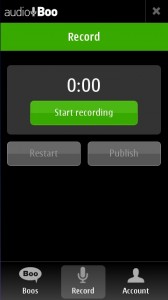
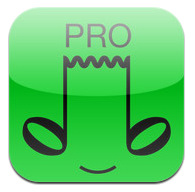
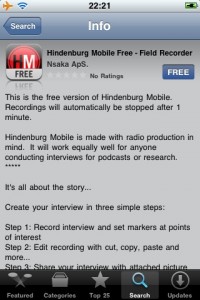
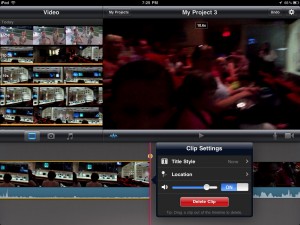
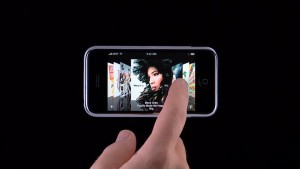



Feedback